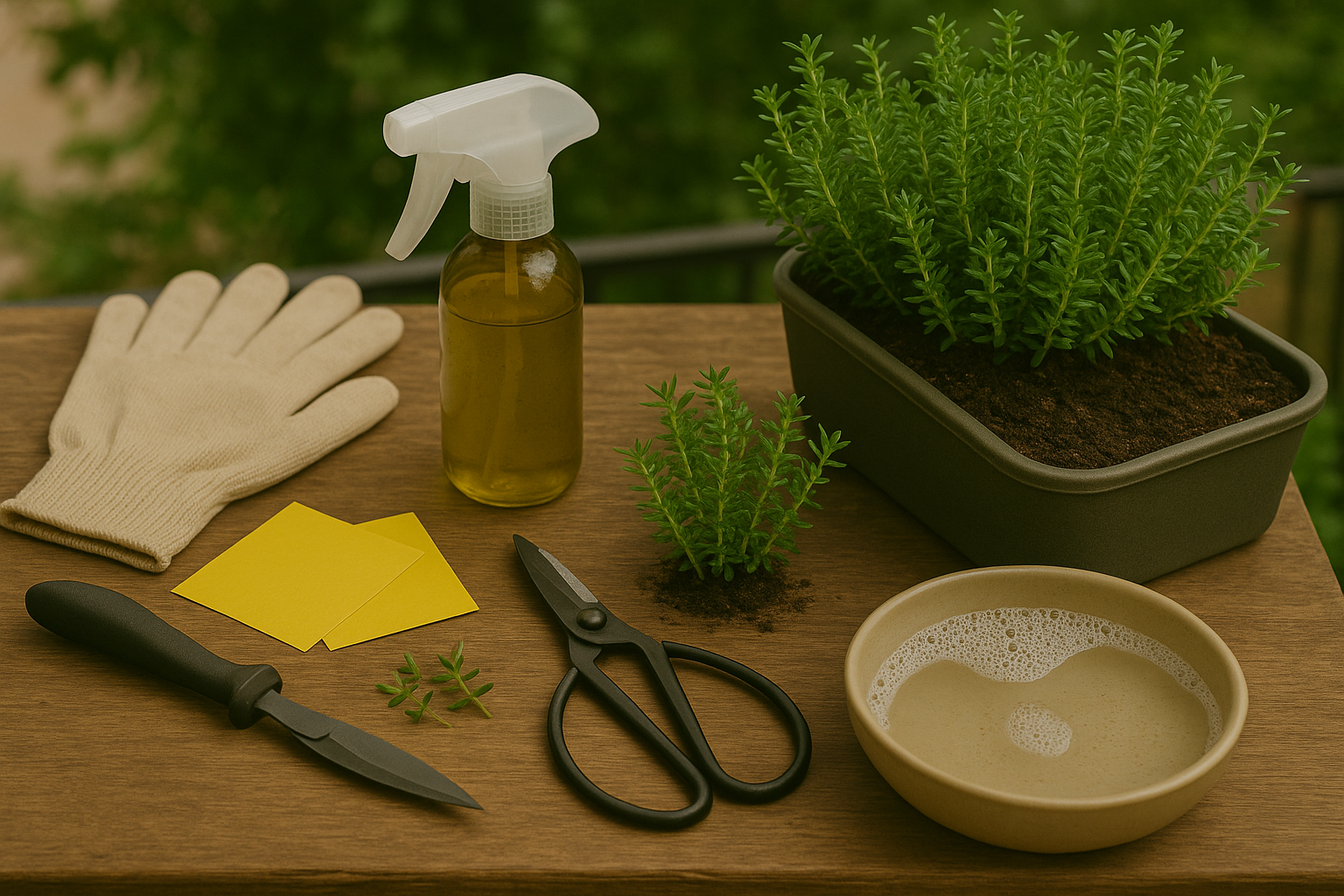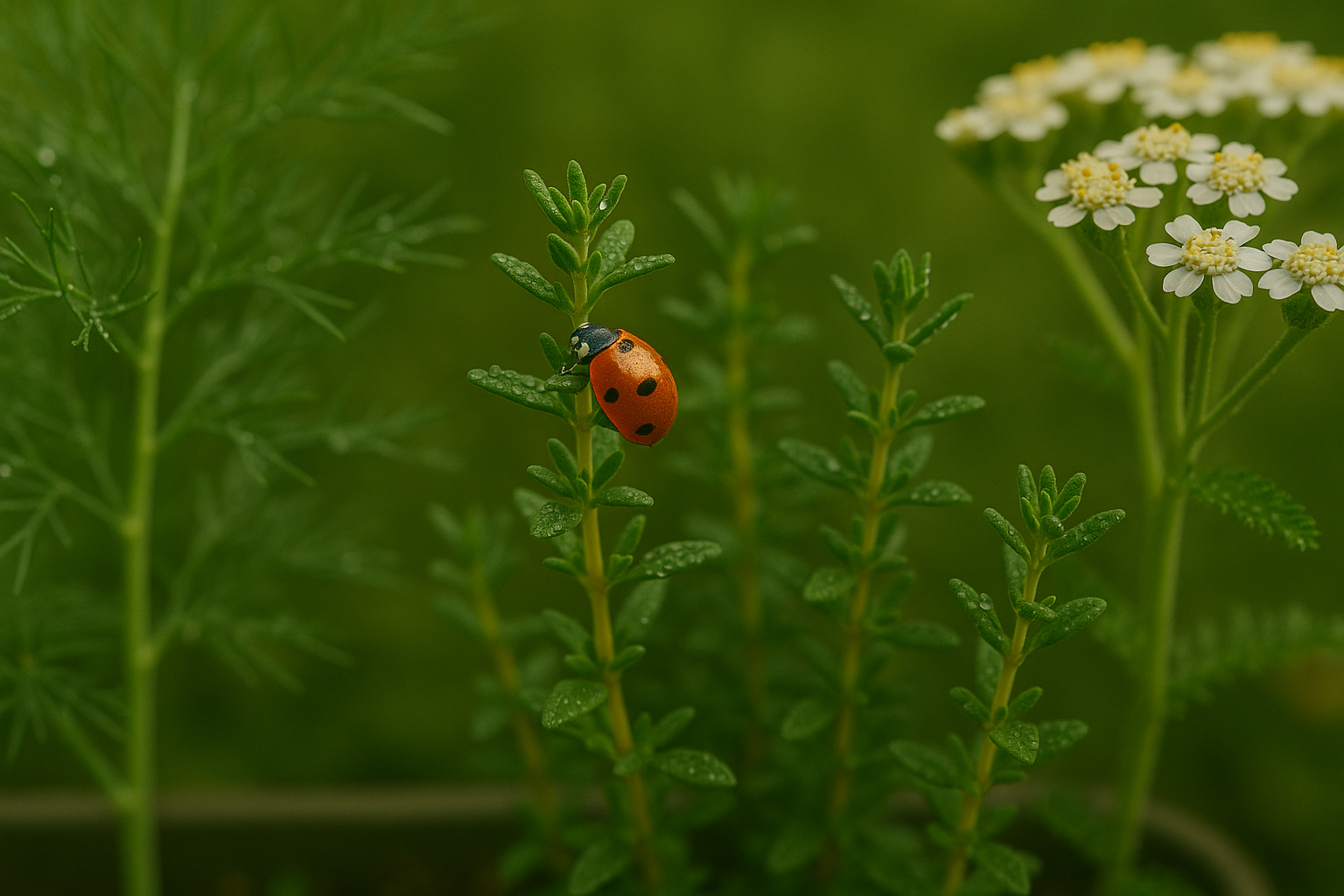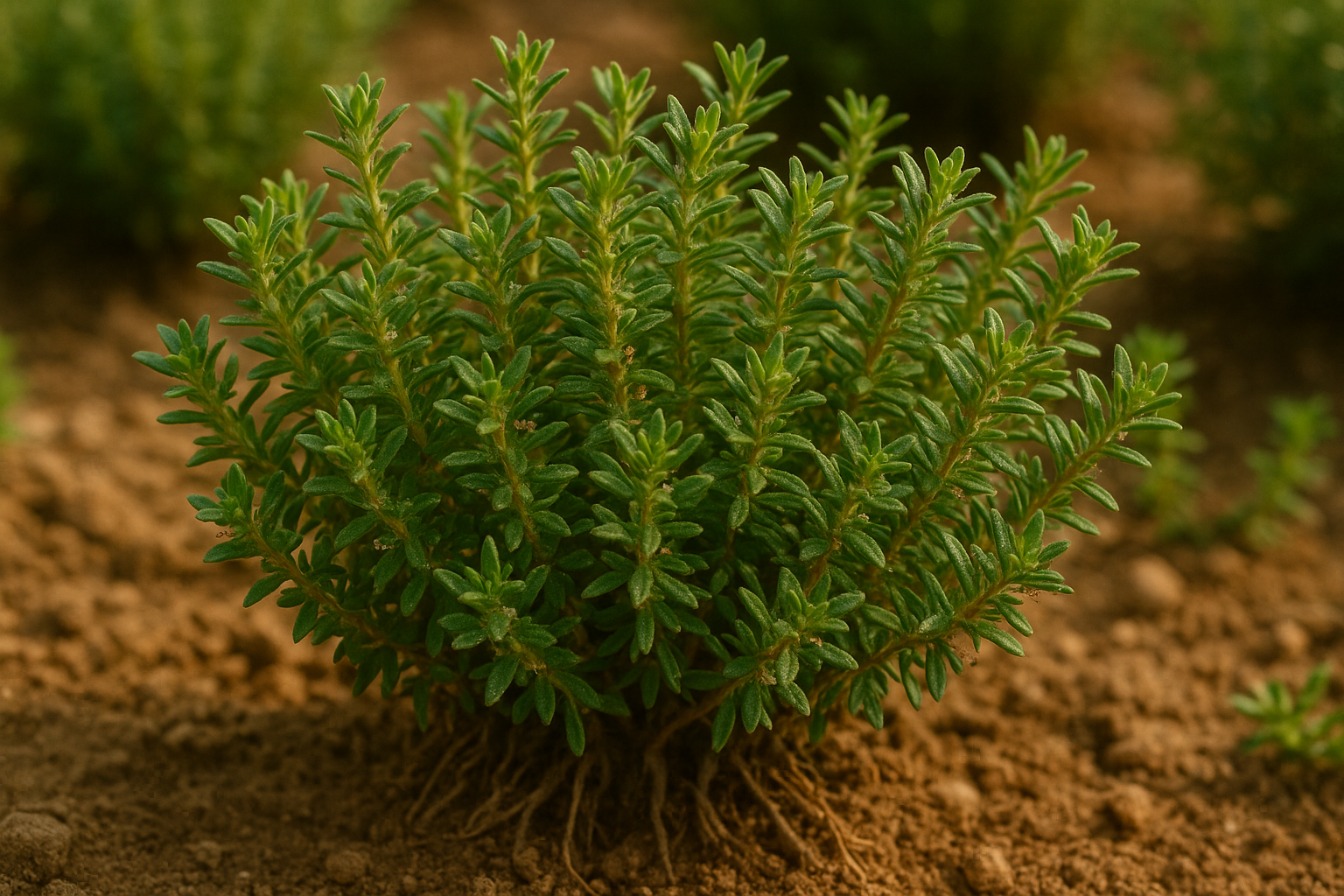Introduction to Thyme Pests and Why Management Matters
Thyme pests can quickly turn thriving herb gardens into a source of frustration for home cooks and gardeners alike. Valued for its fragrant leaves and versatility in seasoning everything from roasted vegetables to savory meats, thyme is a staple in kitchens around the world. However, even this hardy perennial isn’t immune to trouble.
Common thyme pests include aphids, spider mites, thrips, and root-knot nematodes, all of which can sap the plant’s vigor, stunt growth, or even kill the plant if left unchecked. Early detection is crucial, as these tiny invaders often go unnoticed until significant damage has occurred.
Managing thyme pests promptly through regular inspection, proper spacing, and organic remedies can prevent infestations before they spiral out of control. Staying proactive not only protects your thyme plant’s health but also ensures you’ll have fresh, flavorful herbs ready whenever you need them.
Recognizing the Most Common Thyme Pests
Thyme, while hardy and fragrant, can attract a range of common pests that every gardener should watch for. Spider mites, for instance, are tiny and hard to spot but leave behind telltale fine webbing, usually on the undersides of leaves, and cause thyme leaves to turn speckled or bronze as they feed on sap.
Aphids, often clustering around tender new growth and stems, are small, soft-bodied insects that secrete a sticky substance known as honeydew, which can attract ants and promote sooty mold. Mealybugs look like small cottony patches, typically found tucked in leaf joints or along stems, and they sap plant vigor as they feed.
Scale insects resemble tiny brown or tan bumps along stems and leaf undersides; they can be mistaken for part of the plant until you notice their sticky residue and stunted growth on the thyme. Finally, fungus gnats are small, dark flies that hover around soil or plant bases—their larvae chew roots and leave plants looking weak or wilted.
To spot problems early, regularly inspect your thyme for clusters of bugs, unusual sticky patches, fine webbing, or cottony growths. Catching these signs as soon as possible lets you act quickly, protecting both the health and flavor of your herb garden.
Key Signs of Infestation
Spotting the early signs of a pest infestation in your plants can make all the difference between a quick fix and long-term damage. Look for yellowing leaves, which often suggest sap-sucking insects like aphids or whiteflies are at work.
Distorted or curled growth can be another giveaway, as pests such as thrips or mites feed on new shoots. Sticky honeydew on leaves or surfaces below your plant is a telltale sign of pests like scale insects or mealybugs—this residue can also attract ants or lead to the growth of black sooty mold.
Fine webbing, usually found in leaf joints or undersides, often points to spider mites, which are hard to spot without close inspection. You may even see tiny bugs moving on the plants; grab a magnifying glass if needed.
It’s crucial to catch these symptoms early, as small pest populations are much easier to control. Keep in mind, many pest symptoms—like yellow or deformed leaves—can look similar to those caused by nutrient deficiencies or disease.
If you notice sticky residue, visible insects, or webbing alongside the damage, suspect pests first. Early identification means less damage and a quicker recovery for your plants.
Hands-On Solutions

When tackling pesky garden intruders, the right hands-on solution depends on the pest you’re dealing with. For soft-bodied bugs like aphids and spider mites, a strong blast of water or thorough washing can dislodge them from plants—just repeat every few days for persistent outbreaks.
Leaf-chewing caterpillars and larger pests like beetles are often best controlled by handpicking; simply wear gloves and drop them into soapy water. Pruning off heavily infested leaves stops the spread and gives your garden a fresh start.
Sticky traps work wonders for monitoring and catching flying nuisances like whiteflies and fungus gnats—just remember to replace traps as they fill up. When it comes to organic treatments, neem oil and insecticidal soap are gentle on beneficial insects but tough on most soft-bodied and sucking pests.
Spray every seven to ten days, ensuring you coat the leaf undersides where bugs often hide, and reapply after rain. While chemical pesticides offer fast knockdown, they risk harming pollinators and beneficial insects, making organic options safer for home gardens, especially if you have pets or kids.
Control methods vary by pest:
- Slugs and snails retreat when you use beer traps or diatomaceous earth around plant bases.
- Thrips respond best to repeated neem oil sprays.
- Flea beetles dislike floating row covers and benefit from regular reapplication of soap or neem after rain.
The key to lasting success is consistent monitoring—catch problems early and stick to a regular schedule. Combining methods, like handpicking and spraying, keeps populations in check and builds a healthier, more resilient garden with each season.
Natural Predators and Biological Control

Beneficial insects like ladybugs, lacewings, and predatory mites are some of the best allies you can have in keeping a thyme garden healthy. Ladybugs love to feast on aphids, lacewing larvae devour a variety of soft-bodied pests, and predatory mites target spider mites that can weaken your thyme plants.
To attract these natural predators, consider planting companion flowers like dill, fennel, or yarrow nearby, which provide food sources and shelter. Avoid using broad-spectrum insecticides, as they can harm beneficial insects along with pests.
Sometimes, the natural population of predators in your area may be too low to make a dent in an infestation. In such cases, you can purchase live ladybugs or predatory mites online or at local garden centers and gently release them onto your thyme plants during the cooler times of day.
However, biological control isn’t a cure-all—it works best as part of an integrated pest management strategy. If pest numbers stay high despite introducing predators, you may need to combine this approach with hand-picking, targeted organic treatments, or improving your garden’s habitat to further encourage beneficial insects.
Always monitor your thyme closely to catch any outbreaks early, ensuring a thriving, pest-controlled herb garden.
Proactive Pest Prevention for Healthy Thyme
Keeping your thyme plants healthy starts with a few proactive pest prevention strategies that focus on long-term plant health rather than quick fixes. Begin by giving your thyme plenty of room—proper spacing encourages airflow, making it harder for pests and fungal diseases to take hold.
Water your thyme carefully, aiming for the soil rather than the leaves, since damp foliage attracts mildew and insects. Perform quick, regular inspections: flip leaves to check for spider mites or aphids, and watch for any signs of webbing or holes.
Companion planting can be especially helpful; try growing thyme alongside pest-repelling herbs like rosemary or sage, which confuse and deter common insects. Healthy soil is another key line of defense, so enrich your beds with compost, test pH levels, and avoid over-fertilizing, as too much fertilizer can make plants more vulnerable.
Always clear away fallen leaves and plant debris to remove hiding spots for unwanted bugs, and rotate your thyme to a fresh spot each year to outsmart soil-borne pests. Instead of waiting for an infestation, maintaining a consistent routine—watering wisely, inspecting often, cleaning up constantly, and keeping soil in top shape—builds resilience in your thyme that reactive pesticides simply can’t match.
By embedding these preventive habits into your care, you’ll enjoy vibrant, pest-resistant plants season after season.
When Pests Signal a Bigger Problem
Pests on your thyme plant can sometimes be an early warning sign of bigger issues like diseases or environmental stress. For example, fungus gnats or aphids often appear when the soil stays too wet, creating ideal conditions for root rot or mold to develop—problems that show up as yellowing leaves, wilting, or a musty smell.
These symptoms can easily be mistaken for pest damage, but if you notice leaf spots, fuzzy growth, blackened stems, or an overall decline despite removing pests, there’s likely a disease or care issue involved. In these cases, fungicides or changes in watering habits are needed rather than just insect spray.
Regularly check your thyme for abnormalities in leaf color, growth, and soil moisture. Early detection makes it easier to address stress factors before they cause serious damage, helping your thyme stay healthy and fragrant throughout the growing season.
